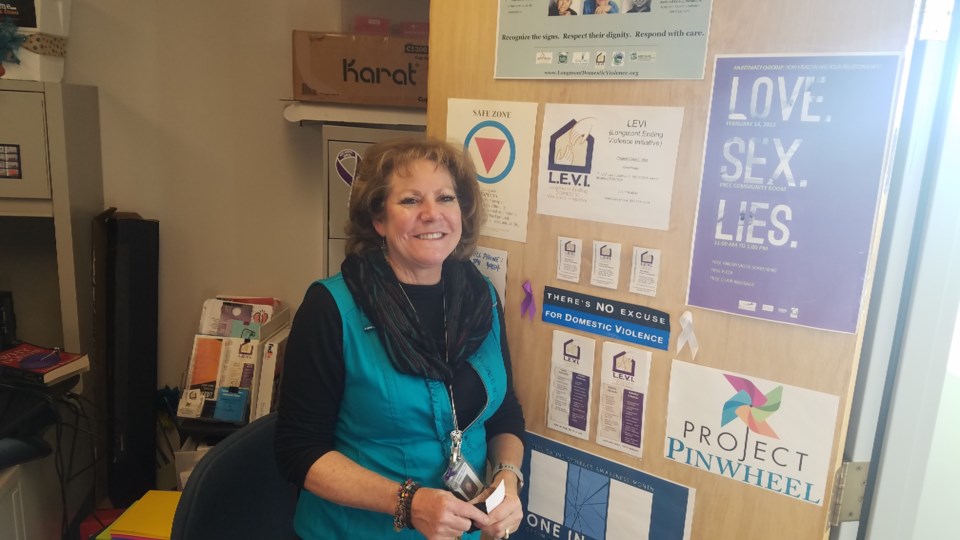Lea esta historia en español aquí.
***
Reports of spouses and significant others being punched, kicked, shoved and threatened all went up during the COVID-19 spread, according to the Longmont Ending Domestic Violence Initiative or LEVI. Domestic violence hit its zenith in July, in which 102 reports were recorded, the most ever for a single month in Longmont, said Kim Heard, project coordinator for LEVI.
LEVI works with 25 agencies in Boulder County to prevent domestic abuse through education and gets help to victims and their families.
Heard, who heads the agency on a part-time basis, said COVID-19’s effects hit especially hard in mid-summer as victims were pressed up against their abusers in families already facing a financial cliff. A tiny spark is often ignited with partners and children paying the price, she said.
“July was just crazy,” Heard said. “It was so hot and people are stuck in quarantine together and people are stressed out trying to feed their families.”
Longmont Police Detective Edna Munoz Pena in an email said potential victims could not escape to school or work because in many cases they were forced to work or take classes from home.
”We have seen very violent crimes come through our desks over the last several months, which is very concerning,” said Munoz Pena, who is part of Longmont’s specialized domestic violence unit.
She said strangulation cases have become more common and studies have shown most of those attacks occur when victims are trying to leave a relationship.
“This is very concerning because of the implications and long-term effects strangulation can have on the body along with the fact that injuries are not always visible,” Munoz Pena said.
Munoz Pena also worries many domestic violence cases are under-reported.
“Although we have had many record-breaking months, there is always the question on how many more are not being reported by schools, places of employment that would normally report when they became aware of abuse occurring,” she said.
March through October this year, there were 660 reports of domestic abuse and 326 arrests. That compares to 613 reports and 341 arrests during that same period in 2019, Heard said.
There also was an increase in the number of domestic violence cases in which children were present, Heard said. There have been 357 children affected by domestic abuse so far in 2020, with 258 from March 15 to the present, she said. Longmont recorded a total of 281 children present for all of 2019.
“So there is a significant increase this year since we still have two months to go,” she said in an email.
The rise of domestic violence cases in Longmont linked to COVID-19 mirror’s state and national trends. Violence spiked in several metro areas after stay-at-home restrictions lifted, according to the Denver Post.
San Antonio, New York City, Portland, Oregon, and Jefferson, Alabama, also saw big percentage increases in domestic violence this year, according to the American Journal of Emergency Medicine. “Stay at home orders may cause a catastrophic milieu for individuals whose lives are plagued by domestic violence,” the journal reported.
Latinas, many of whom are underpaid and lack access to resources to escape domestic abuse, are especially vulnerable to domestic violence during the pandemic, according to Salud America.
COVID-19 also has forced local shelters to implement strict distancing restrictions, Heard said. Each family is now placed in one room when before two or three families could share a room.
“Since the pandemic, shelters are really struggling to get people placed,” she said. “In other times families would have just gone to a shelter, but that is not always the case now.
“I spend a lot of my time trying to find motel rooms for people trying to get out of these situations. But those are the times we are living.”

